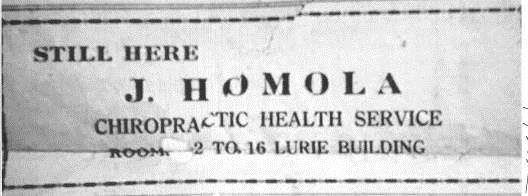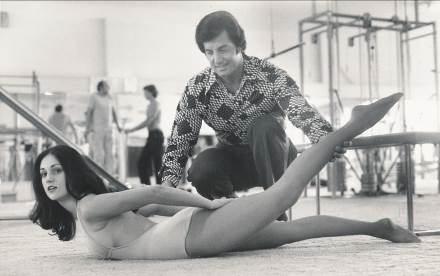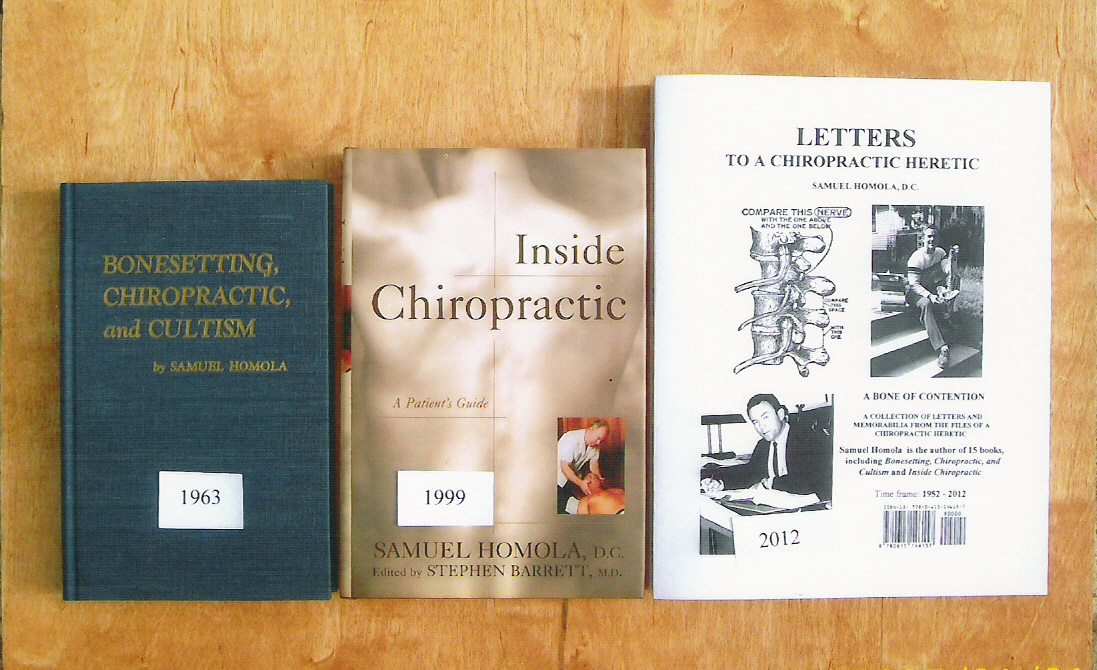Since I am getting old (like Mark Crislip), one of the first things I do each morning is read the obituary to see who among my friends and acquaintances have died, most of whom are usually younger than I am. This morning I saw a familiar name ─ a chiropractor who opened a practice in my city many years ago. He was a subluxation-based chiropractor who employed an aggressive subluxation-oriented practice-building firm that provided him with canned newspaper advertising suggesting that he and his clinic offered the latest in scientific care for a variety of human ailments ─ care not provided by other chiropractors or any other health professional.
As a longtime critic of chiropractic subluxation theory and unethical advertising, I opposed the practice of this chiropractor, and I advised my patients not to seek his services. He eventually closed his office and moved away. According to his obituary, he had practiced in three different locations before his death, apparently struggling in his practice. I felt bad for this chiropractor and his wife and children, all of whom may have been adversely affected by his choice of chiropractic as a career, and I felt some degree of guilt for the effect my actions might have had on his family.
The uncertain aspects of chiropractic as a career
The nonfalsifiable chiropractic subluxation theory, which proposes that nerve interference caused by a vertebral subluxation can cause organic disease, still guides the practice of many chiropractors, most of whom now have undergraduate degrees. At least three years of undergraduate study (90 semester hours leading to a bachelor’s degree) are required to enroll in a chiropractic college. Several states require a baccalurate degree before a chiropractor can apply for a license to practice.
Unfortunately, an undergraduate degree or an unrelated graduate degree does not always offer protection against indoctrination in pseudoscience. Chiropractic students who do not have critical thinking skills will simply become products of what they have been taught. The result is that many well-meaning chiropractors struggle to defend and promote a practice based on a belief system that is sure to be opposed by the scientific community. Most newly-graduated chiropractors are unaware of the societal suspicion and the isolation resulting from rejection by the scientific community until they hang out their shingle.
The undergraduate requirements for enrolling in a privately-funded chiropractic college and to be licensed to practice as a chiropractor would permit enrollment in an academically-recognized college supported by state funding, offering degrees in physical medicine and other health-care occupations that provide more income and better opportunity for employment as well as a greater degree of social acceptance and professional recognition. Anyone considering chiropractic as a career should sit down at a computer and search the negative side of chiropractic before making a commitment that will have a profound life-long effect.
A degree in chiropractic offers no assurance for success in private practice. There is little opportunity for employment of chiropractors outside of private practice. Failure in private practice may force a chiropractor to leave the profession and seek employment in another field. Chiropractors who have the means and the ability to “start over” may leave the practice of chiropractic simply because of an inability to tolerate the pseudoscience in chiropractic and the isolation resulting from rejection by mainstream health-care professionals.
When I am asked about enrolling in a chiropractic college, I always suggest that it would be better to pursue a physical therapy degree, which would permit use of manual therapy in the mainstream of health care. Doctors of Physical Therapy (DPT) trained in use of spinal manipulation can be found in clinics, hospitals, and private practice in most cities. Every state now allows some level of direct access to physical therapy treatment without a prescription or a physician referral.
My personal struggle
When I began my chiropractic practice in 1956, I had already rejected subluxation theory, a view I expressed in my 1963 book Bonesetting, Chiropractic, and Cultism. I believed that my use of spinal manipulation along with a few physical therapy modalities would provide a service not yet available in physical therapy departments. Some of my physical medicine textbooks recommended spinal manipulation as a treatment for mechanical-type neck and back pain. So I had good reason to believe that I offered a service of value. If I had believed that use of spinal manipulation in the treatment of back pain was quackery, I would not have gone into practice.
Offering treatment for musculoskeletal back problems, it was many months before I could take in enough money to cover the expense of operating my office. The public image of chiropractic was not good, insurance did not cover chiropractic, and physicians would not refer patients to chiropractors ─ for good reason. I could not have kept my office open long enough to build a practice if it had not been for my wife, Martha, who worked as an abstractor preparing property titles.
My published work about chiropractic and spinal manipulation brought support and referrals from other health-care professionals. Back-pain patients were channeled to my office by physicians and insurance carriers in order to bypass care by subluxation-based chiropractors. Although most health insurance now covers chiropractic care and chiropractors are better educated, chiropractic subluxation theory continues to define chiropractic in state laws that provide support for the pseudoscience of subluxation-based chiropractic care.
Finding a good chiropractor
There are, of course, some good chiropractors who use manipulation appropriately in a practice limited to treatment of musculoskeletal problems, using physical-treatment methods that include use of spinal manipulation as a treatment option, but they are hard to find. There is no way for the average person to distinguish such chiropractors from subluxation-based chiropractors. There are many chiropractors who claim to be advocates of musculoskeletal care but whose web sites include reference to subluxation nonsense. Until there is a national chiropractic association that openly rejects subluxation theory, limiting membership to science-based chiropractors with some way of identifying these chiropractors publicly, most physicians and health-care providers may simply refer patients to physical therapists for manual therapy that has not been contaminated by subluxation theory.
When I retired from private practice in 1998, one of the biggest problems I had was finding a chiropractor I could recommend for my former patients. I knew that patients who had received treatment in my office might assume that all chiropractors practiced the way I did, unaware of the great diversity of antithetical treatment methods among chiropractors. Listing as a “licensed chiropractor” in a telephone book offers no clue about the validity of the services offered. After reviewing the web sites and advertisements of the dozen or so chiropractors in my area, I found only one chiropractor that I thought was trustworthy. Today, I cannot find a nearby chiropractor that I would recommend. I am forced to recommend physical therapy for my friends and my former patients in order to avoid the possibility of chiropractic treatment based on subluxation theory.
Continued review of current chiropractic literature and web sites reveals that little has changed since my retirement from chiropractic practice. A broad scope of practice for chiropractors is still supported by subluxation theory under a variety of labels, such as a “vertebral subluxation complex,” an undetectable asymptomatic “joint dysfunction” alleged to cause disease by interfering with nerve supply to organs. Some chiropractors who have discarded the term “subluxation” continue to claim that manipulating vertebrae to correct a mysterious problem in the spine, such as a “neurobiomechanical lesion,” is an effective method of restoring and maintaining health.
Leaning toward “integrative medicine,” many chiropractors are subscribing to “functional medicine” and other alternative medicine procedures to further increase their scope of practice. Full-page ads offer treatment for thyroid issues, fibromyalgia, neuropathy, diabetes, and other problems, competing with services offered by multiple specialties and subspecialties that makeup the practice of medicine ─ a trend that is certainly a cause for alarm.

A 1922 newspaper announcement by my father when he was in private practice as a chiropractor in Dothan, Alabama
The guilt of pseudoscience
In addition to the struggle to succeed in private practice as a chiropractor, there is a price to be paid by those chiropractors who “go along” with subluxation theory in order to make a living. Burdened with misgivings, some chiropractors do what they feel they have to do to provide for their family. Some blatantly unethical chiropractors exploit subluxation theory in order to make as much money as possible, treating patients excessively and unnecessarily with treatment methods known to be useless if not downright quackery. Perhaps the most horrendous act of all is the pretense of chiropractors who claim to locate and adjust vertebral subluxations in the cartilaginous spine of a newborn baby, risking injury to epiphyseal growth centers (or worse).
At the end of the day and at the end of life, unethical chiropractors must deal with the guilt that occurs as a result of knowingly mistreating children or misleading patients who are allowed to suffer needlessly in order to complete a course of subluxation treatment “guaranteed to remove the cause of the problem.” Chiropractors with a conscience who take advantage of the suffering and the ignorance of patients who seek their help may have difficulty sleeping at night or may feel a sense of remorse at the end of life when memories replay the details of a selfish purpose that contributed little or nothing to society or to the welfare of mankind.
Although some chiropractors are abandoning subluxation theory and seeking specialization in conservative care for back pain and other musculoskeletal problems, portending a possible path for the chiropractic profession, there will always be a faction in chiropractic that will be devoted to the subluxation theory that gave birth to chiropractic. Belief systems never die since they are not subject to critical thinking or scientific analysis. A good example of this is the profession of osteopathy, which, although now scientific and mainstream, harbors a faction that is devoted to the principles of Andrew Taylor Still, a medical doctor who founded osteopathy with a claim that manipulation of joint and musculoskeletal structures is an effective treatment for most human ailments. Any practice that begins with a false premise and a founding father, such as chiropractic, osteopathy, and homeopathy, can never completely eliminate true believers who are bound together by the tenets of cultism.
Seeking a direction
My heart goes out to chiropractic students who have used their hard-earned undergraduate degrees to enroll in a chiropractic college, unaware of the controversy they must endure in competing with subluxation-based chiropractors who follow the tenets of D.D. Palmer, a magnetic healer and the founder of chiropractic. So far, there is no American chiropractic association or group that has publicly renounced subluxation theory and successfully united the chiropractic profession with a common denominator based on science. An effort in this direction failed with the demise of the National Association for Chiropractic Medicine (NACM) sometime after 2008 as a result of a low and declining membership. Advocating that chiropractic care be limited to treatment of neuromusculoskeletal problems of musculoskeletal origin, membership in the NACM required written renouncement of the chiropractic vertebral subluxation theory.
No applicability for chiropractic subluxation theory
The chiropractic subluxation alleged to be a cause of organic disease has never been demonstrated and is not the same as an orthopedic subluxation (a partial dislocation) or a joint strain that can cause musculoskeletal symptoms. While generic spinal manipulation can be of benefit in relieving the symptoms of mechanical-type back pain, which might occasionally involve an orthopedic subluxation, routine manipulation of the spine to correct a putative chiropractic subluxation as a treatment for conditions ranging from infant colic to back pain is classic cultism. Subluxation theory alone offers no justification for treatment of back pain. A spinal adjustment alleged to cure disease by correcting a vertebral subluxation, invented by Palmer in 1895, is not the same as generic spinal manipulation that has been around for thousands of years.
Today, there are chiropractors who claim to be primary care providers. The American Chiropractic Association offers certification in 10 different specialties, such as “Chiropractic Pediatrics” (often accompanied by opposition to vaccination) and “Diagnosis and Internal Disorders,” with a post-graduate diplomate awarded after attending weekends of classroom instruction. Many entrepreneurial chiropractors use the vague chiropractic “subluxation complex” paradigm to develop questionable techniques and specialties of their own, doing as they please under the umbrella of alternative medicine, relieved of the responsibility and the knowledge required to seek or offer appropriate treatment based on a correct diagnosis.
At the present time, it appears that subluxation theory will continue to dominate the practice of chiropractic. According to a survey of North American chiropractic students published in 2015, the majority of students would like to see an emphasis on correction of vertebral subluxations.
Chiropractic as a “spine specialty”
Some chiropractors claim to be a “spine specialist,” a specialty and a niche they cannot adequately fill because of limitations that do not permit utilization of multiple medical specialties and facilities that are needed to diagnose and treat “spinal problems,” a designation that includes a wide range of conditions, such as severe injury, disease, malignancy, infection, neurological complications, or pain of unknown origin. Physical therapists and properly trained chiropractors may be able to qualify as portal-of-entry practitioners capable of diagnosing and treating uncomplicated, mechanical-type back pain if they are backed up by the medical community, but “spine care” implies a broad scope that requires the attention of unlimited medical specialties and their subspecialties, such as orthopedics, physiatrics, physical therapy, and occupational therapy in a multi-disciplinary environment.

Properly prescribed exercise is essential in the treatment and prevention of back pain (models: Peter Lupus, Alexis Alexander); photo by Samuel Homola
Justification for use of spinal manipulation
Every ethical chiropractor is concerned about the effects of his/her primary method of treatment, spinal manipulation. The theory that vertebral misalignment is a cause of disease or poor health has been rejected by the scientific community, but there is some evidence that spinal manipulation can be helpful in the treatment of some types of back pain. This evidence is weak, however, and there are studies which indicate that spinal manipulation may not be any more effective than other forms of treatment in facilitating recovery from back pain. Case reports of stroke caused by neck manipulation suggest that risk may always outweigh benefit when the upper cervical spine is manipulated.
Obviously, spinal manipulation has limited value and is only one treatment of many that might be helpful in the treatment of back pain, requiring that it be included in a physical-treatment armamentarium as an option among a variety of treatment methods.
Spinal manipulation is the only treatment used by “straight” chiropractic extremists who believe that a vertebral subluxation plays a role in the development of most health problems. Atlas Orthogonal and NUCCA (National Upper Cervical Chiropractic Association) chiropractors believe that subluxation of the atlas (first cervical vertebra) is the primary cause of disease. Every patient gets a neck adjustment, no matter what the ailment might be, even low-back pain. Most subluxation-based chiropractors adjust every portion of the spine in order to correct or prevent alleged subluxations.
Use of spinal manipulation in the treatment of mechanical-type back pain can sometimes be justified by its effect in improving mobility and providing temporary relief of pain, buying the time needed to allow recovery without resorting to use of drugs, injections, or surgery. It goes without saying, however, that there is no substitute for medication in relieving severe back or radicular pain, which might be aggravated by inappropriate use of spinal manipulation. Victims of back pain often suffer unnecessarily when they respond to chiropractic advertisements promising “pain relief.” Any practitioner who offers treatment for acute back pain should have access to judicious use of pain medication as a short-term treatment option when pain is severe or incapacitating.
In rare, carefully selected cases, manipulation can be dramatically effective in restoring mobility in spinal joints locked or stiffened by post-traumatic adhesions. Office procedures such as massage and physical therapy modalities along with ongoing evaluation and observation can be an important part of caring for back pain. The relaxing effects of a good back-cracking back rub can enhance the effects of any treatment for chronic back pain, reducing or eliminating use of over-the-counter medication. The placebo effect of cavitation, a popping sound produced by manipulating the spine, may play a role in the patient’s perception of how effective a manipulative treatment might be.

Self help can be an important part of caring for chronic back pain (model: Betty Rowell); photo by Samuel Homola
Diagnosis: The most important part of back care
A correct diagnosis, which often requires multi-disciplinary involvement, is essential to determine what type of treatment might be needed. Most cases of acute uncomplicated back pain are self-limiting and will resolve with time, with or without treatment. Manual therapy, self-help measures, and instruction in exercise and ergonomics may be helpful in relieving symptoms until recovery is complete, depending upon the diagnosis. When there is acute back pain caused by disease or disc herniation, or when a nerve root is truly “pinched” or impinged by an osteophyte, symptoms may be exacerbated by manipulating the spine. Chiropractors who “analyze” the spine in a search for subluxations always manipulate the spine, offering treatment that is likely to be useless or harmful. When symptoms worsen as a result of such treatment, as they often do, they may be falsely attributed to “retracing,” a reaction alleged to be the result of removing the cause of the problem.
Subluxation-based chiropractors who “list a subluxation” rather than provide a diagnosis often explain that they do not diagnose or treat disease; they simply correct subluxations so that the body can heal itself. The success rate of treating a variety of ailments by adjusting imaginary subluxations is quite high since many ailments are self-limiting and will resolve on their own without treatment. Such “success” fails to provide appropriate care for patients who need special care based on a correct diagnosis.
The bottom line
While there appears to be no doubt in the scientific community that the chiropractic vertebral subluxation theory is not a valid construct, there is evidence to suggest that spinal manipulation can be a helpful procedure in the treatment of some types of back pain when it is part of a program that includes a variety of physical treatment options in a multidisciplinary environment. Evidence-based chiropractors who use generic spinal manipulation appropriately deserve some consideration as opposed to subluxation-based chiropractors who routinely “adjust” vertebral subluxations alleged to be a cause of disease. It is the moral and ethical duty of any science-based health-care provider to combat unproven subluxation-based chiropractic care, while taking care to be objective in evaluating the effects of spinal manipulation.
In addition to protection of public health, rejection of subluxation theory by conscientious chiropractors may be as important for the mental health of these chiropractors as it is for the physical health of their patients. I cannot imagine how I would feel at this stage of my life if I had devoted my career and my life to the pseudoscience of vertebral subluxation theory, fully aware of the falsehood involved. Hopefully, in the end, my published work, based on 43 years of practice as a chiropractor, will show that I did some good by separating the good from the bad in the use of spinal manipulation, steering the public away from inappropriate chiropractic care while providing a service of value to those who came to me for help.

My legacy – three books archived by the National Library of Medicine about the flaws and opportunities for improvement within the chiropractic profession.

